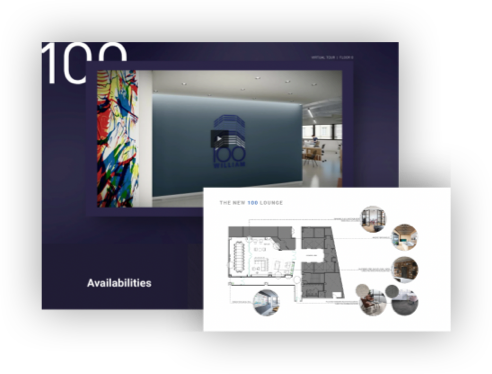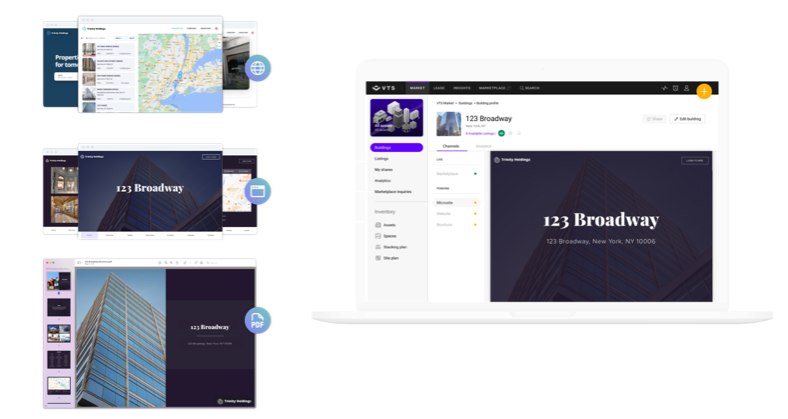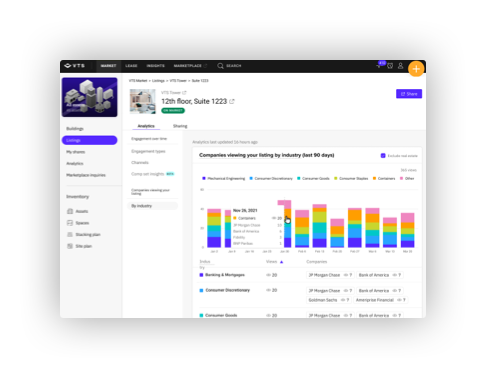In modern CRE, if teams aren’t working together, it’s nearly impossible to capture a competitive advantage or optimize processes, people, and technology. Forming a partnership between marketing and leasing teams is essential to cast a wide net and boost listing engagement.
When marketing and leasing teams move in one streamlined direction, that unified workflow differentiates portfolios, and powerhouse functions can execute actionable, data-driven insights.
Together, marketing and leasing teams can:
-
Bring listings to market quickly
-
Capture tenant demand
-
Attract quality tenants, renewal after renewal
But how can two traditionally siloed teams come together?
By using data to drive insights. When marketers and leasing professionals use VTS Market to connect the dots, that can do wonders for the bottom line.

of landlords agree that keeping collateral up to date is difficult

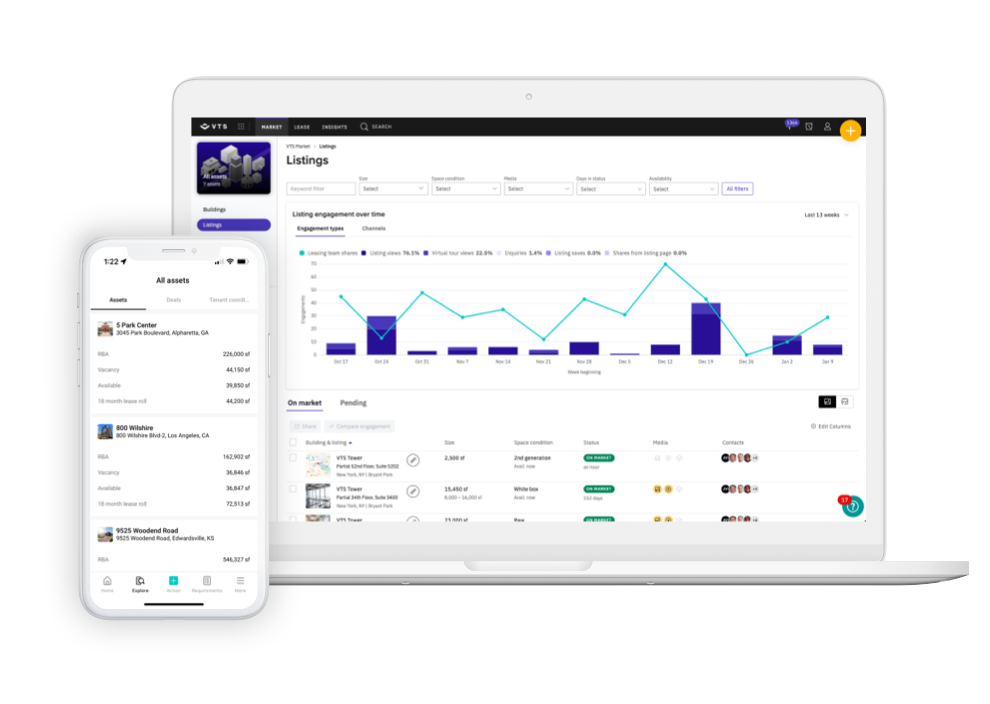
Promoting listings and closing deals: Marketing teams depend on leasing data to promote accurate, engaging listings. Leasing teams need elevated marketing to close deals successfully.
Listings need to be pushed across every channel. Otherwise, it’s hard to generate valuable, timely insights. This can mean longer deal cycle times, making it difficult to get that tenant to sign a lease.
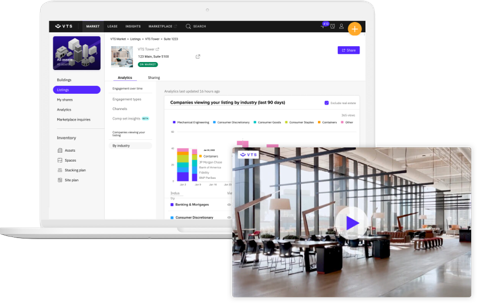
When it comes to marketing and leasing teams working together, a few things stand in the way.
Lack of transparency: Marketers find it difficult to know which spaces are available and what deals are in play. Without data, leasing teams struggle to see the big picture or optimally prioritize follow-ups.
Multiple manual updates: Teams make collateral updates across multiple channels manually, multiplying the amount of work involved. Teams also share content and track engagement, interest, and deal status — also manually.
Siloed communication: Leasing and marketing teams aren’t always able to communicate effectively. Time, money, and effort are spent guessing when teams could instead be doubling down on tactics that actually move the needle.
- Bringing quality listings to market as quickly as possible
- Consolidating content creation to streamline processes and cut costs
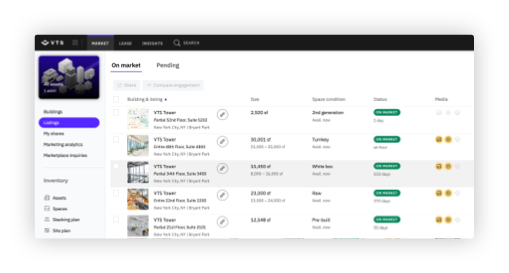
- Analyzing outputs and applying learnings to stay competitive
- Automating cross-channel updates in real-time
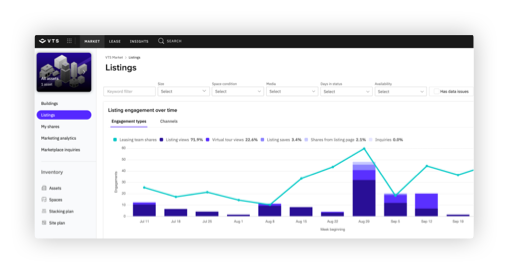
- Building deal strategies that differentiate listings
- Leveraging data to inform strategies, so results are proven to fill vacancies
- Knowing which outreach methods are resonating and with which audience
- Automating processes to ensure agility and avoid friction in the deal cycle
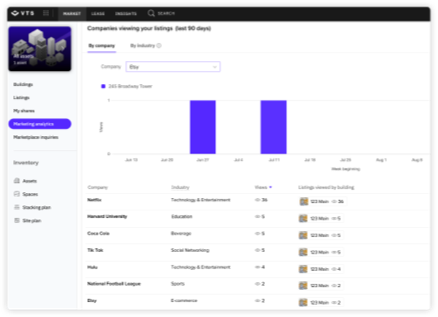
Not all content is equally effective. The top content types tenants expect to see in a listing are:
- Video walk-throughs
- High-resolution photography
- Detailed floor plans
- 3D virtual renderings
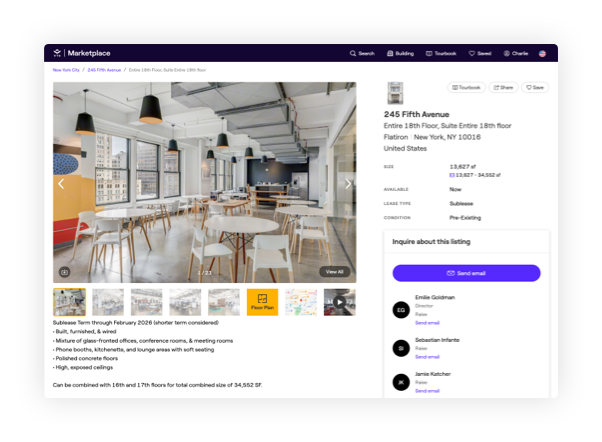
A few of the highly visible channels where prospective tenants expect to find content about listings are:
- Web and microsites for spaces and buildings
- Paid digital advertisements
- Marketing and outreach emails
- Social media
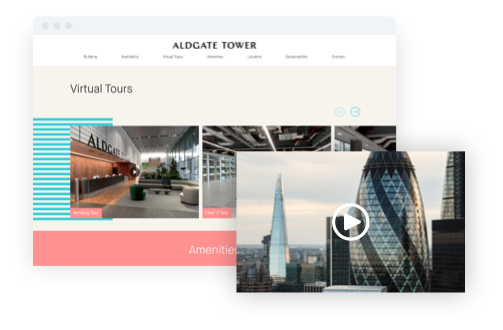

of landlords say effective digital marketing, including virtual tours and brochures, helps to shorten deal cycle time and attract more qualified tenants.
The VTS Market advantage
Securing a closed lease comes from optimizing the marketing-leasing pipeline. VTS Market brings teams closer together by providing a single source of truth-to-power marketing and leasing functions.
When marketing and leasing teams use VTS Market, it means:
-
 Data transparency so each team can perform duties with the same information
Data transparency so each team can perform duties with the same information -
 Accurate, real-time automation, reducing manual work
Accurate, real-time automation, reducing manual work -
 Advanced analytics that show teams exactly who is engaging in which listing
Advanced analytics that show teams exactly who is engaging in which listing

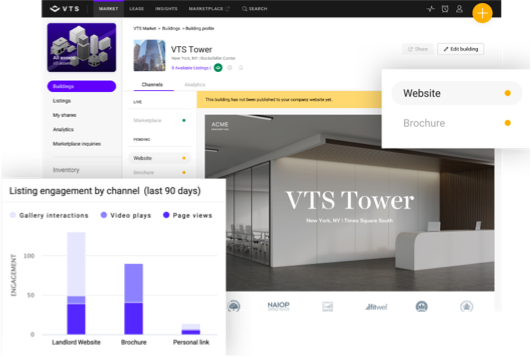
VTS Market bridges the gap between marketing and leasing, bringing teams together and helping to capture a competitive edge.
Integrated with VTS Lease, this solution has proven to help teams get earlier access to tenant insights and put data to action earlier in the deal cycle. The results? You anticipate tenants’ every move and capture their attention to close deals even when demand is down.



